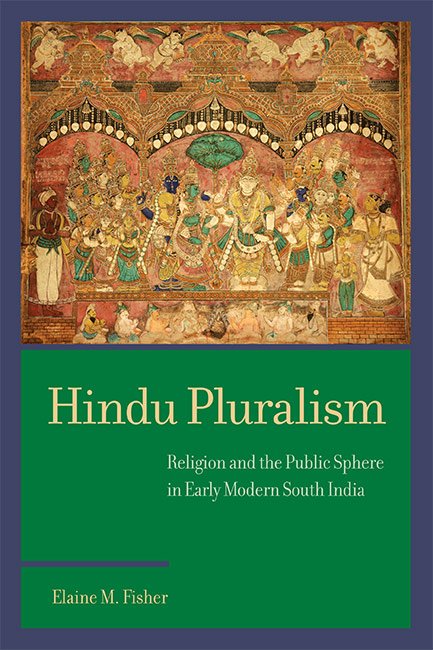Hindu Pluralism
by Elaine M. Fisher | 2017 | 113,630 words
This thesis is called Hindu Pluralism: “Religion and the Public Sphere in Early Modern South India”.—Hinduism has historically exhibited a marked tendency toward pluralism—and plurality—a trend that did not reverse in the centuries before colonialism but, rather, accelerated through the development of precolonial Indic early modernity. Hindu plur...
Śaṅkarācārya, Śrīvidyā, and the Making of a Sectarian Community
Just like Kālidāsa—the historical Kālidāsa as well as his seventeenth-century counterpart—the Smārta-Śaiva theologians of early modern south India were accomplished wordsmiths, crafting their public personae as well as their personal devotionalism in Sanskrit verse. But how do hymns of praise or ritual manuals manufacture a community, a sectarian tradition unprecedented in Indian history?
Niklas Luhmann, as we have seen, defines a social system, such as a sectarian community, as a “meaning-constituting system,”[1] an operationally closed set of social institutions that maintains—and in fact reconstitutes—its own boundaries internally through the structures of meaning it generates. That is to say, Hindu sects function autonomously from one another as meaning-constituting systems, each individually reproducing the religious institutions that endow participation in that community with sectarian-inflected religious identity. Luhmann illustrates the functional independence of such systems through analogical appeal to the models of biology, on both a microscopic and a macroscopic level. An individual cell, for instance, exhibits metabolic functions that both perpetuate the cell itself and maintain the boundary that separates it from its immediate environment. That is, although cell walls are permeable, a cell functions as an organism unto itself, maintaining itself independently from its immediate neighbors. To extend this analogy to the study of religion, a self-constituting sectarian community generates its own meaning-creating institutions—monasteries, lineages (paramparā), temple complexes, sites of performance, and so on. When viewed macroscopically, the aggregate of such mutually independent systems, whether sects or cells, facilitates the balance of an entire ecosystem—or, as the case may be, an entire society.
Sectarian social systems, within the larger religious ecosystem that is Hinduism, we find, maintain an internal coherence and mutual independence comparable to those of discrete biological systems, or of the functional social systems that Luhmann describes as comprising modern society, such as the political or legal systems. We can describe early modern Hinduism as a Sectarian Age in that discrete sectarian communities came to thrive in remarkable social and doctrinal independence from one other. In south India, for instance, major sectarian communities such as the Śrīvaiṣṇava or Mādhva Vaiṣṇava lineages, or the Tamil Śaiva Siddhānta, attain virtually complete autonomy on a social as well as doctrinal level by becoming major economic shareholders in the networks of exchange centered at major temple complexes and monasteries. This is not to say, naturally, that interactions between sectarian communities do not occur on a regular basis. In fact, it is just such interactions—whether polemical exchanges, competition for resources, or theological influence and reaction—that allow each sect to maintain its distinctive identity in the face of changing circumstances.
Footnotes and references:
[1]:
Luhmann (1995, 21). By meaning, Luhmann does not simply appeal to the abstract oft-touted concept of religious “meaning,” which is almost impossible to define. Rather, he argues that a process of communication within a social system generates concepts, or systems of value, that are themselves necessary for the system to decide what elements of its own constitution to maintain or transform over the course of time. Social institutions, according to this model, do not reproduce themselves in the absence of such meaning; here we can observe a crucial distinction between systems theory and a crude Marxist social theory that derives religious concepts as ideology, arising purely as a function of societal phenomena.
